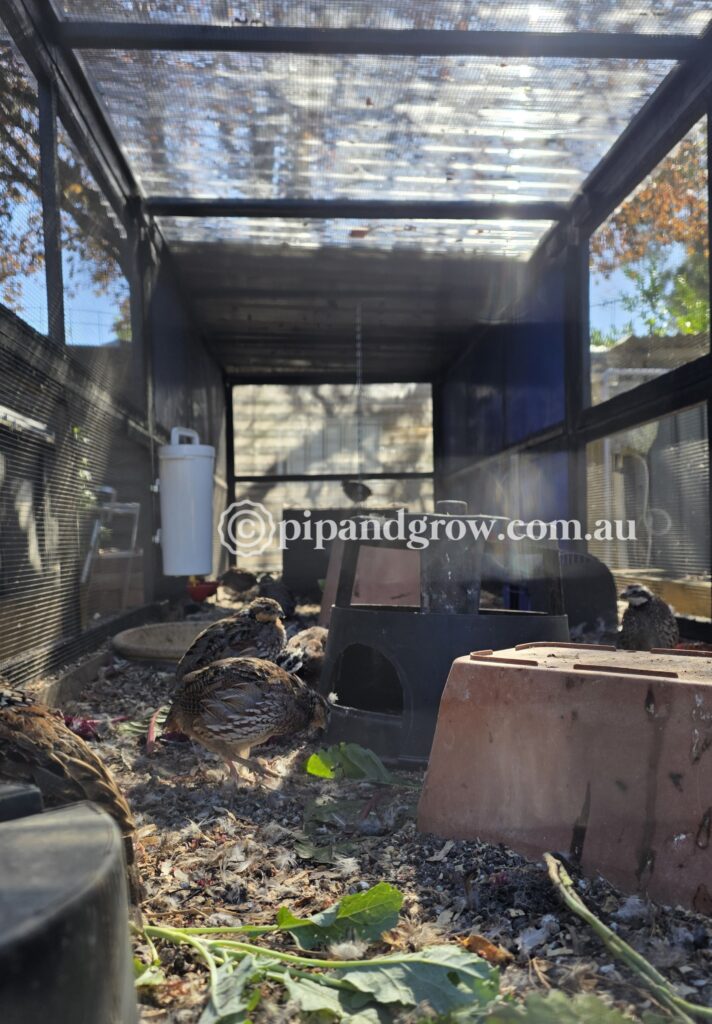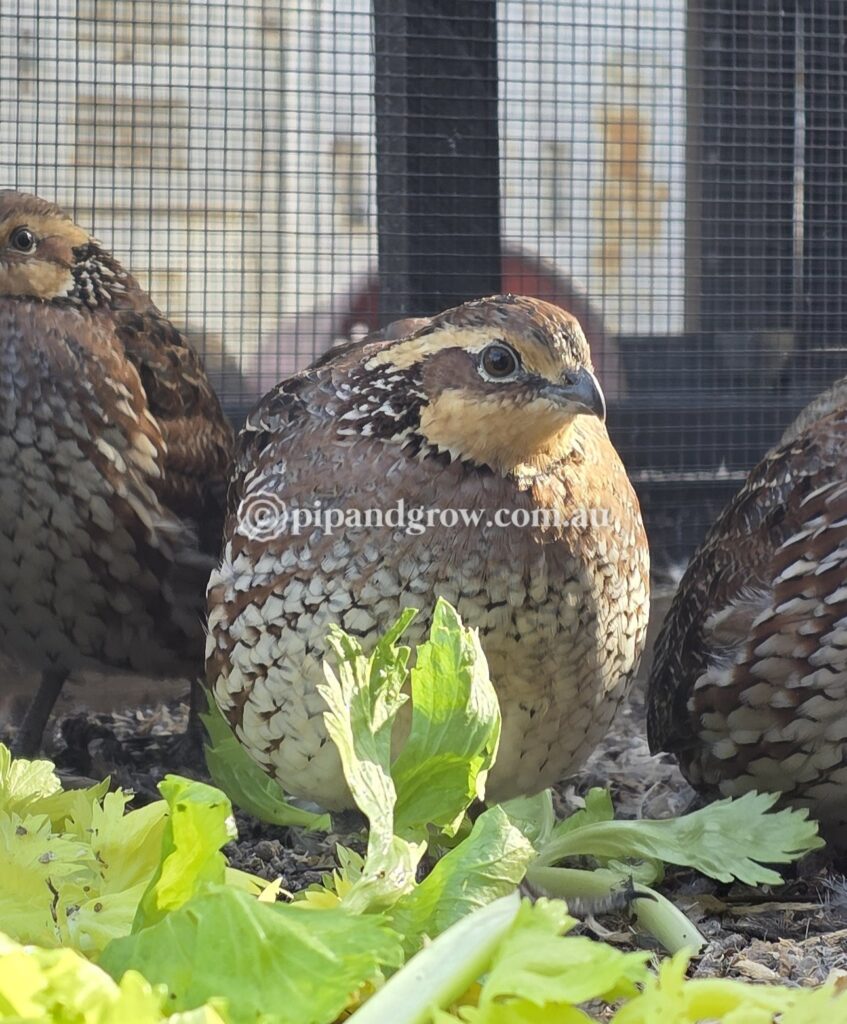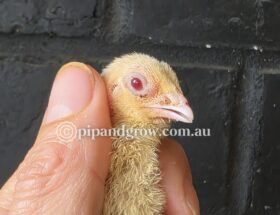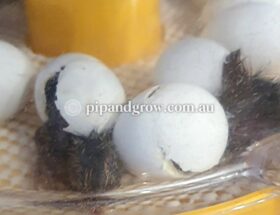Bob White Quail Brooder Setup and Care
Bobwhite quail chicks require a proper brooder setup that includes a reliable heat source, suitable bedding, appropriate feed, and clean water from the moment they hatch. A consistent and safe heat source is essential during the first few weeks, as the chicks are extremely small and cannot regulate their body temperature on their own. Exposure to cold can be fatal, so it’s important to keep the brooder in a warm, draft-free area.

Bobwhite quails are slower to mature compared to Japanese quail. They consume less feed, and their feather development also takes more time. They are typically fully feathered by around 6–7 weeks of age.
We were able to transition our Bobwhite chicks to a secure outdoor pen with adequate weather protection at 6 weeks of age during the warmer season. However, in colder months, they may require an extended brooding period depending on the local climate and temperature.
Habitat and Care for Bob White Quails
Housing:
Bobwhite quails require secure enclosures to protect them from predators, including rodents and other vermin. A rodent- and vermin-proof coop is essential to ensure their safety. While they don’t need a large amount of space, they do thrive when given room to roam and explore. A well-ventilated, easy-to-clean enclosure will help maintain good health and hygiene.

As ground-dwelling birds, they do not require perches or designated sleeping areas, though they do enjoy resting on raised surfaces from time to time and can be quite flighty. For this reason, enclosures with a bit of height—at least 1 metre—are ideal to prevent injury and allow natural behavior. Unlike chickens, quails do not return to a coop or perch to sleep. They will rest wherever they feel safe and comfortable within their environment. They love hiding in bushes, tunnels, and other hideouts. When it comes to laying eggs, they tend to choose specific favorite spots, though they don’t typically use nest boxes.
Diet:
Bobwhite quails thrive on a high-protein diet, ideally containing 20–24% protein. For best results, game bird feed is recommended, but it’s perfectly fine to incorporate other quality options to suit your setup. Feeds such as Laucke Red Hen range and Showbird MP Breeder are designed to support a wide range of poultry, including chickens and game birds, and can be a suitable alternative if game bird-specific feeds are not available.
At our farm, we use the following feeding schedule:
– Game Bird Starter (crumble): From hatch to around 6–8 weeks of age
– Game Bird Breeder: From 8 weeks onward
Characteristic:
We have found that Bobwhite quails are very shy and timid when they are young. They do not enjoy being held and often seem quite scared. Sometimes, they can be flighty and try to fly away when we attempt to catch or hold them. However, as they become familiar with the faces they see regularly and grow older, their anxiety gradually decreases. By around 10 weeks of age, they may even come to accept treats and can be hand-fed. Our children describe them as the “meerkats of birds” because of their curious and alert behavior. We can tell when we approach their coop because their little faces change from alert to a recognition mode, accompanied by cute noises.
Our advice is to keep interacting with them regularly ; they definitely learn to recognize their keepers!
Sexing Bob White Quail


Bobwhite quails can be sexed around 9-12 weeks of age based on feather color and facial markings. From around 8 weeks, males begin developing a distinct black-and-white striped facial pattern, while females have a buff-brown striped face. These markings become more pronounced as they mature. Additionally, males will start to produce their distinctive “bob-white” call, which is a pleasant and recognizable sound.
Egg productivity and Breeding behavior of Bob White Quail
Bob White quails reach maturity at 6-8 months during warmer months, offering a consistent and convenient source of small white eggs. Under optimal conditions, females can lay 150-180 eggs per year
Bob White quails go broody ; they will attempt to incubate their eggs naturally, with males also taking turns sitting on the eggs while females take breaks. Once hatched, both parents co-parent the chicks for about two weeks until the young are capable of caring for themselves.


